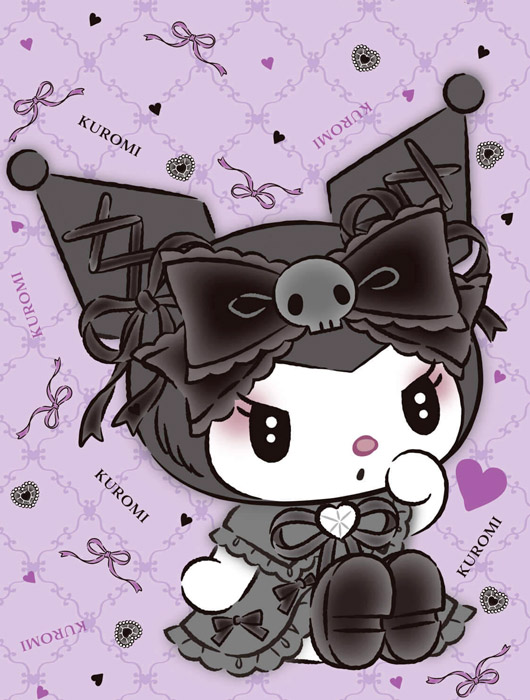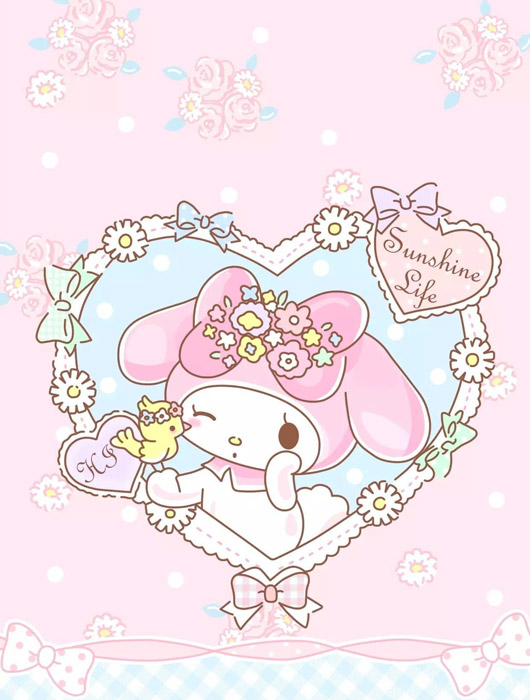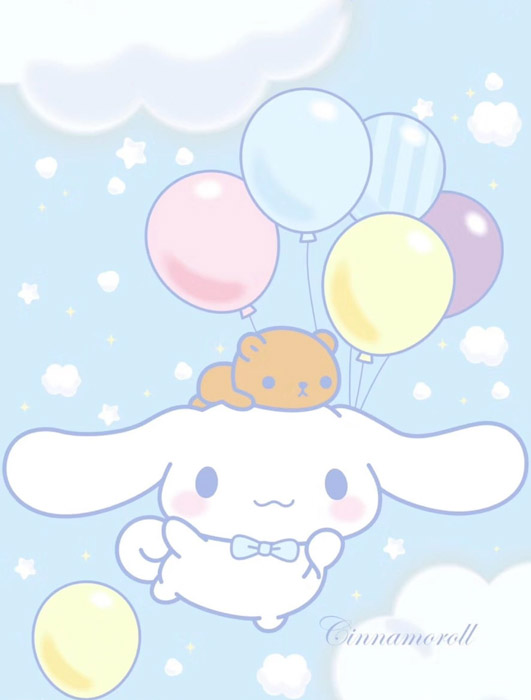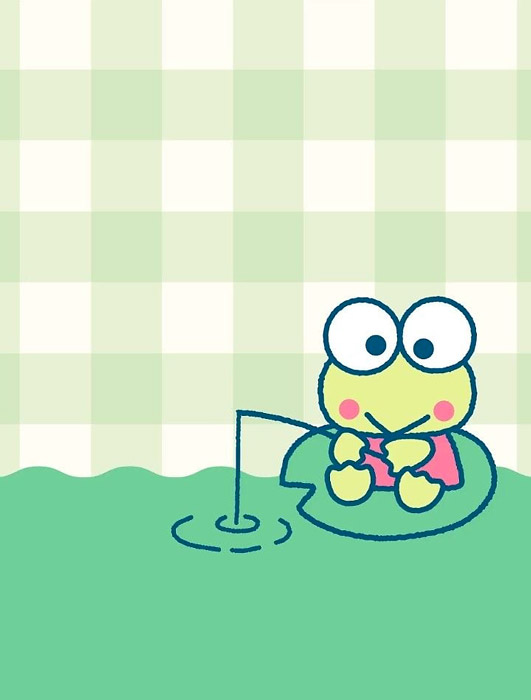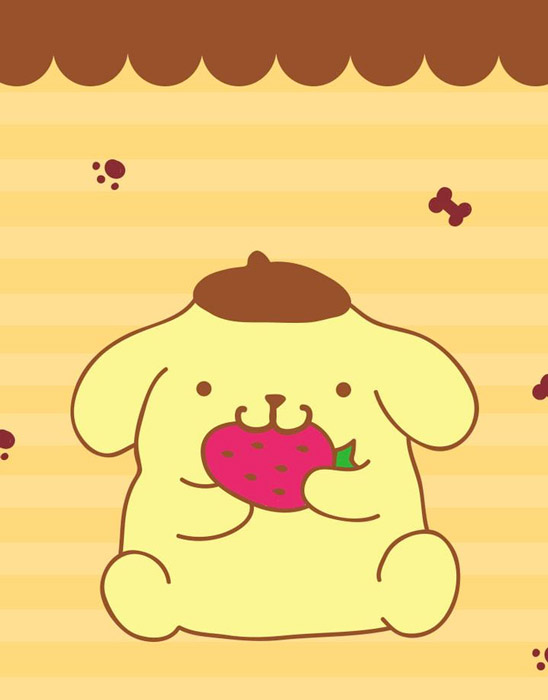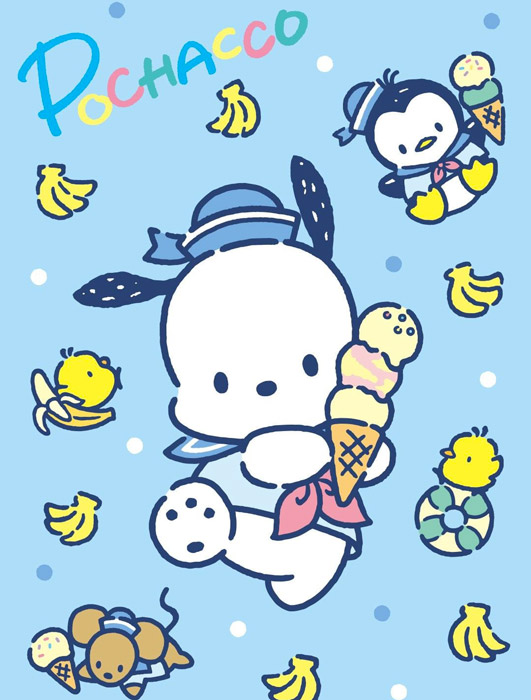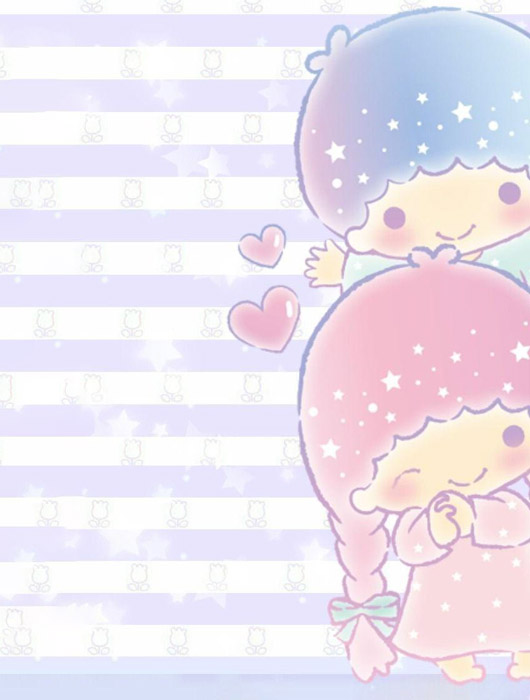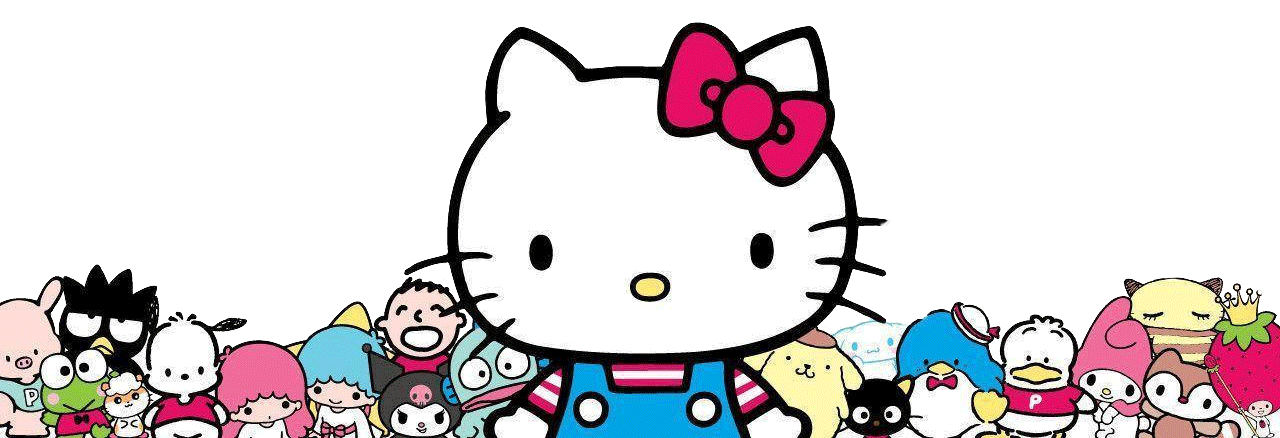
Step into the whimsical world of Sanrio and meet a delightful cast of characters including Hello Kitty, My Melody, Badtz-Maru and many more beloved icons. For over fifty years, Sanrio has been spreading joy and nurturing friendships across generations and cultures. Whether it’s stationery, clothing, toys or digital experiences, every Sanrio creation is thoughtfully designed, blending charm, creativity and a signature touch of cuteness. Let these endearing characters bring a little magic to your everyday and remind you that happiness is even better when it’s shared.
All Sanrio Characters
Hello Kitty
Since her debut, Hello Kitty has been a cherished companion to generations, known for her gentle smile and unmistakable red bow. More than just a character, she represents kindness, connection, and a quiet sense of joy that resonates with fans of all ages. Whether you're discovering her charm for the first time or have loved her for years, Hello Kitty brings a touch of warmth to everyday life. From thoughtfully designed accessories and clothing to endearing gifts and collectables, she adds a little delight wherever she appears. With Hello Kitty, it's the small moments that often mean the most.
Birthday
November 1st
Height
Stack of 5 apples
Weight
3 apples
Hobbies
Baking cookies, collecting cute things
Kuromi
Kuromi brings a playful twist to the world of Sanrio, blending attitude with unexpected charm. Known for her bold black outfit and signature pink skull, she’s both mischievous and endearing — a character who doesn’t shy away from standing out. Beneath her cheeky exterior lies a softer side, one that enjoys quiet moments, favourite treats, and writing in her diary. From fashion accessories to stationery and beyond, Kuromi adds a spark of individuality to everything she touches. For those who like their cute with a hint of rebellious flair, Kuromi is the perfect companion.
Birthday
October 31st (Halloween)
Gender
Female
Personality
Villain, punk, tomboy
Hobbies
Writing in her diary & Cooking
My Melody
My Melody invites you into a gentle world where kindness, friendship and a touch of sweetness go hand in hand. Recognised by her pink hood and soft-hearted nature, this lovable rabbit has been capturing hearts for generations. Whether she’s appearing on charming accessories, thoughtful gifts or everyday essentials, My Melody brings a sense of warmth and comfort wherever she goes. Fond of baking and always ready to share a smile, she finds joy in life’s little moments — especially when it involves her grandmother’s almond pound cake. Let My Melody add a little magic to your day, and celebrate the simple pleasures of love, laughter and friendship.
Birthday
January 18
Gender
Female
Personality
Very honest, Good-natured, Kind
Hobbies
Cinnamoroll
Cinnamoroll is a gentle soul from the whimsical world of Sanrio, known for his fluffy ears, soft blue hues and a tail that curls like a cinnamon roll. With his kind heart and dreamy nature, he brings a sense of calm and wonder wherever he goes. Whether he’s soaring through the sky or simply sharing a quiet moment with friends, Cinnamoroll adds a sprinkle of magic to everyday life. From delicate stationery to cosy apparel and charming keepsakes, each item reflects his sweet, cloud-like charm. Let Cinnamoroll brighten your day with his soft spirit and discover the joy of gentle adventures and heartfelt connections.
Birthday
March 6
Height
21.5cm
Skills
Hobbies
Keroppi
Keroppi brings a lively spark to the Sanrio universe, full of energy, curiosity and cheer. With his wide eyes, bright smile and signature red bow tie, he’s always ready for his next adventure — especially when it’s shared with friends. Bursting with enthusiasm, Keroppi turns the ordinary into something fun, whether he’s exploring the outdoors or adding character to your favourite accessories. From playful stationery to bold apparel, every Keroppi creation is made to lift your spirits. Step into his upbeat world and let his adventurous nature inspire joy, laughter and a fresh sense of fun in your everyday life.
Birthday
July 10th
Gender
Species
Frog
Residence
Pompompurin
Pompompurin is the lovable golden retriever from Sanrio, instantly recognised by his brown beret and ever-cheerful nature. With a fondness for soft things, cosy naps, and his favourite shoe, he brings a relaxed, heartwarming charm to everything he touches. Whether it’s adorable stationery, snug apparel or playful gifts, Pompompurin adds a gentle touch of happiness and comfort to everyday life. His easy-going spirit and friendly smile have made him a favourite among fans of all ages. Step into his cosy world and let Pompompurin remind you to slow down, enjoy the little things, and find joy in the softest of moments.
Birthday
April 16th
Gender
Skills
Napping
Hobbies
Pochacco
Pochacco is Sanrio’s playful pup with a big heart and a love for all things sporty. Known for his floppy ears and boundless energy, he brings a cheerful spirit to everything he does — from kicking a football to chasing new adventures with friends. Whether you’re picking up fun stationery, relaxed apparel or thoughtful gifts, Pochacco’s charm shines through in every detail. His world is filled with movement, laughter and the joy of simple pleasures. Let Pochacco brighten your day with his upbeat personality and remind you that every moment is better when shared with a smile and a bit of play.
Birthday
February 29th
Gender
Description
Sporty, playful, trips (often)
Hobbies
Little Twin Stars
Drift into the dreamlike world of the Little Twin Stars, Sanrio’s celestial siblings Kiki and Lala. Born among the stars, these gentle twins bring a soft glow of magic and wonder wherever they go. With Kiki’s star-topped hat and Lala’s starlight wand, they add a delicate sparkle to every creation — from ethereal stationery and apparel to imaginative toys and digital delights. Their universe is one of warmth, kindness and shared dreams, turning ordinary moments into starry memories. Let the Little Twin Stars guide you through a world of light and friendship, where every day feels like a journey across the night sky.
Birthday
December 24th (Christmas Eve)
Species
Description
Hobbies
Badtz Maru
Meet Badtz-Maru — Sanrio’s cheeky penguin with a rebellious streak and a signature smirk. With his spiky hair and unapologetic attitude, he stands out from the crowd, bringing boldness and a touch of mischief to everything from stationery and clothing to quirky gifts and digital fun. While he loves to stir things up, there’s a softer side to Badtz-Maru too, especially when it comes to his friends. Full of personality and never one to follow the rules, he adds a fun, unexpected twist to the everyday. Let Badtz-Maru liven up your world with his playful charm and offbeat humour — because life’s better with a little mischief.
Birthday
April 1st (April Fool's Day)
Gender
Skills
Pretending to play the piano and violin (he has a home tutor) & Escaping
Hobbies
Sanrio Characters Names
Sanrio Co., Ltd., a Japanese company celebrated for its irresistibly cute and iconic characters, has captured hearts worldwide since its beginnings in 1960. Originally founded as the Yamanashi Silk Center Co., Ltd., the company shifted from silk to giftware, and eventually made its mark by creating characters designed to spark joy and emotional connection. By the 1970s, Sanrio was developing original characters—ushering in what would become a global cultural phenomenon.
Among its most beloved creations is Hello Kitty, introduced in 1974. With her simple charm, red bow, and heartwarming appeal, Hello Kitty (full name: Kitty White) quickly rose to international fame. Hailing from suburban London, she has become the face of kawaii culture and appears on everything from clothing and accessories to toys and homeware. She even stars in her own theme parks, Sanrio Puroland and Harmonyland in Japan.
Other characters soon followed:
My Melody (1975): A gentle, pink-hooded rabbit known for her kindness and love of baking—especially her grandmother’s almond pound cake.
Little Twin Stars (1975): Celestial siblings Kiki and Lala, who bring a sense of wonder and stardust wherever they go.
Tuxedo Sam (1979): A dapper penguin from Antarctica with an impressive collection of bow ties and a charmingly clumsy nature.
Pochacco (1989): A sporty, floppy-eared pup full of energy and warmth, always ready to explore and make friends.
Keroppi (1987): A lively frog from Donut Pond, known for his bright smile, love of swimming, and cheerful outlook.
Badtz-Maru (1993): A mischievous black penguin with a rebellious streak, known for his cheeky smirk and playful attitude.
Chococat (1996): A curious black cat with a chocolate-coloured nose and a knack for picking up the latest news.
Pompompurin (1996): A laid-back golden retriever in a brown beret, who adores soft things, milk, and spending time with friends.
Cinnamoroll (2001): A cloud-born puppy with long ears and a tail shaped like a cinnamon roll, who brings gentle magic wherever he goes.
Gudetama (2013): A lazy egg yolk who embodies modern-day fatigue and apathy, becoming unexpectedly relatable to fans across the globe.
Aggretsuko (2015): A red panda balancing office life and emotional release through heavy metal karaoke—striking a chord with many young adults.
Kuromi (2005): My Melody’s rival with a mischievous spirit and a girlish flair beneath her punk style.
Pekkle: A sweet white duck who enjoys singing, dancing, and daydreaming.
Monkichi: A cheerful monkey with a love of bananas and a desire to make people laugh.
Each character comes with a unique backstory—often including a birthday, favourite foods, hobbies, and family details—helping fans connect with them on a personal level. Sanrio has always focused on creating characters that are more than just images: they’re personalities that invite emotional engagement and friendship.
In the 1990s, the company expanded its universe through television, films, video games, and a growing range of merchandise. Sanrio Puroland opened in 1990 in Tokyo, followed by Harmonyland in 1991, allowing fans to immerse themselves in the world of their favourite characters.
As Sanrio’s popularity soared in Japan, the brand gained international momentum, particularly through Hello Kitty’s global success. By the early 2000s, the company was collaborating with international fashion labels, tech brands and lifestyle companies—from ASOS and Converse to Apple—broadening the appeal of its characters across different demographics.
Sanrio’s slogan, "Small gift, big smile," reflects its unique philosophy: creating products that go beyond function to become expressions of affection and connection. The brand has always placed emphasis on communication and positivity, whether through character-themed cafés, exhibitions, or digital innovations like apps and games. Notably, in 2020, Sanrio introduced Moppu, its first digital-only character.
Philanthropy also plays a key role in Sanrio’s ethos. The Sanrio Peace Foundation, established in 1984, works to promote harmony and kindness globally, using its characters as symbols of goodwill.
Today, Sanrio remains a vital force in global pop culture, thanks to its timeless characters, thoughtful storytelling, and commitment to joy and connection. Whether through nostalgic favourites or new additions that speak to modern life, Sanrio continues to enchant fans of all ages—bringing a little more kindness, creativity, and warmth into the world.
FAQ – Sanrio Characters
Hello Kitty remains the most iconic Sanrio character worldwide. Introduced in 1974, she has since become a global symbol of kindness, friendship and timeless cuteness. Other fan favourites include My Melody, Cinnamoroll, Kuromi, and Badtz-Maru.
You can find a wide range of Sanrio-inspired products right here on our website — from plush toys and accessories to fashion, stationery, and gifts. Whether you're shopping for yourself or looking for a thoughtful Hello Kitty present, we’ve got you covered.
“Kawaii” (かわいい) is a Japanese word that means cute or adorable. It’s a cultural concept that Sanrio embodies through its characters — soft colours, rounded shapes, and joyful expressions. Sanrio is considered one of the pioneers of the kawaii movement.
Hello Kitty is a character created by Sanrio, but Sanrio is the brand behind many more characters, including My Melody, Little Twin Stars, Keroppi, and Cinnamoroll. So, while Hello Kitty is the face of Sanrio, she’s just one of many in a larger universe.
It depends on the recipient!
Hello Kitty is always a classic choice
Cinnamoroll is perfect for someone who loves soft, dreamy aesthetics
Kuromi suits fans of bold, mischievous styles
My Melody is great for those who love gentle and sweet designs
You’ll find all kinds of Hello Kitty gifts and Sanrio presents to suit different personalities.
Yes! Sanrio has released several animations and mobile games featuring Hello Kitty and her friends. Some characters, like Aggretsuko, have even starred in Netflix series. These stories highlight themes like friendship, daily life, and emotional wellbeing.



